Tips for Working Remotely While Traveling
April 10th, 2024
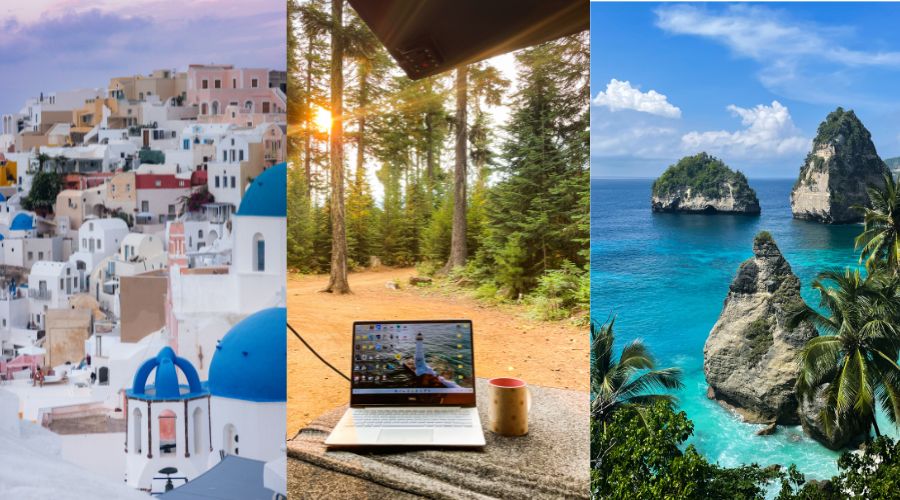
I have been fully remote since 2017. It was during that year I was in a transition period and committed to finding a full-time remote job so I could have the freedom to travel. Back then, remote work wasn’t necessarily new, but it also wasn’t extremely popular. I had been running this travel blog part-time since 2014 and traveled more than the standard two weeks of vacation a year, and giving up the blog just wasn’t an option. I ended up working as a server part-time for months until I finally scored my first full-time remote job for a marketing company.
If you’ve recently scored a remote job or are looking to travel more with your current remote job - woohoo! There is truly nothing better than working and traveling the world. I feel awful complaining about anything because most people would kill to have my gig - and if you have a remote job you can do it, too.
I’ve never understood companies that do not allow their employees to work remotely. For me, I am always more creative, more energized, and more focused when traveling and working.
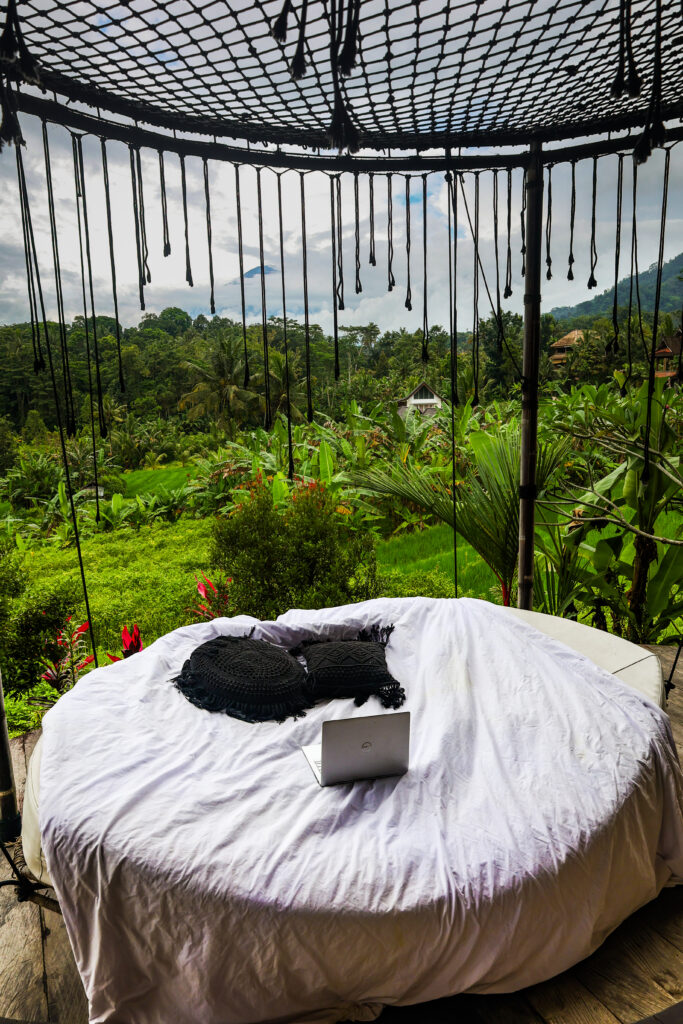
I’m still not a full-time travel blogger. I thoroughly enjoy having a remote full-time job because I know many travel bloggers in the industry who get burnt out and end up not enjoying travel anymore because it’s their job. Running this part-time allows me the flexibility to only choose the partnerships and travel jobs that I’m excited about at rates I think are fair, keeping traveling exciting and enjoyable.
As of April 2024, here is all the work I do remotely, from anywhere in the world:
- Full-time digital director for Nearlywed Magazine
- Part-time travel blogger
- Freelance travel writer
- Freelance content creation
- Brand partnerships
- Manager for my cats (I wish I was joking LOL)
So if you’re someone who has been looking for tips for working remotely and traveling, I’ve got you covered! I’ve been juggling and managing work from all corners of the world for years…and made all the mistakes along the way.

1. Ask Your Company Important Questions
How flexible is your company? Are you expected to work the same hours? Do you track your time? These are all important questions to ask yourself & your company before you travel. Some companies require employees to work the same 8 am - 5 pm EST/MST/PST when traveling, which can make working in time zones in places like Oceania and Asia a bit more difficult because that means night shift on that side of the world.
However, if your company is flexible, great! Work hours how you want. I typically adjust my hours based on what timezone I’m in and what makes the most sense to be available for at least a few hours of the U.S. workday. I will also sometimes split hours - working 4 in the early morning and 4 in the afternoon/evening. Do what works best for you!
2. Figure Out Your Wifi Situation
This should probably be #1 on this list, but oh well. For the first five years of working remotely, traveling + wifi was the BIGGEST headache for me. Because let’s be honest, traveling and working doesn’t necessarily mean you have money, and many WiFi options cost $$. I spent years on the road traveling around the United States banking on libraries and coffee shops for WiFi. And when it didn’t work, I was STRESSED. Here are my three solutions for traveling & WiFi
- Hotspot: The most affordable option for working remotely and traveling within the United States is a hotspot from your cell phone carrier. I’ve taken many Zoom meetings & spent many work days working from my Verizon Hotspot. It’s $30/month, but can be turned off/on at any point, which means you can turn it on a pay for only the months you’re traveling. You just need to ensure you have at least 2-3 bars of service on the hot spot to handle virtual meetings.
- Starlink: I JUST upgraded to this in 2024, and it isn’t budget-friendly. However, if you are full-time on the road, it is the BEST WiFi solution. First, check if it is available in your area. It’s a $600 setup fee and $150/month, but you can get WiFi ANYWHERE. I’m talking about taking Zoom calls in the middle of Yellowstone or sending emails from the bottom of the Grand Canyon. Similar to the Hotspot, you can turn it off/on whenever you’d like.
- Researching WiFi in accommodation: this is mostly for international trips, but you NEED to make sure your hostel/hotel/Airbnb has decent wifi. Since COVID there are SO many hostels that label themselves as “remote work hostels” meaning they pride themselves on Wifi strength for remote workings. The Selina brand is my favorite hostel for remote work. You should also do research and how GOOD the WiFi is, not just IF they have it. Reading Google/Hostelworld/Airbnb views usually helps me determine if the WiFi is reliable.
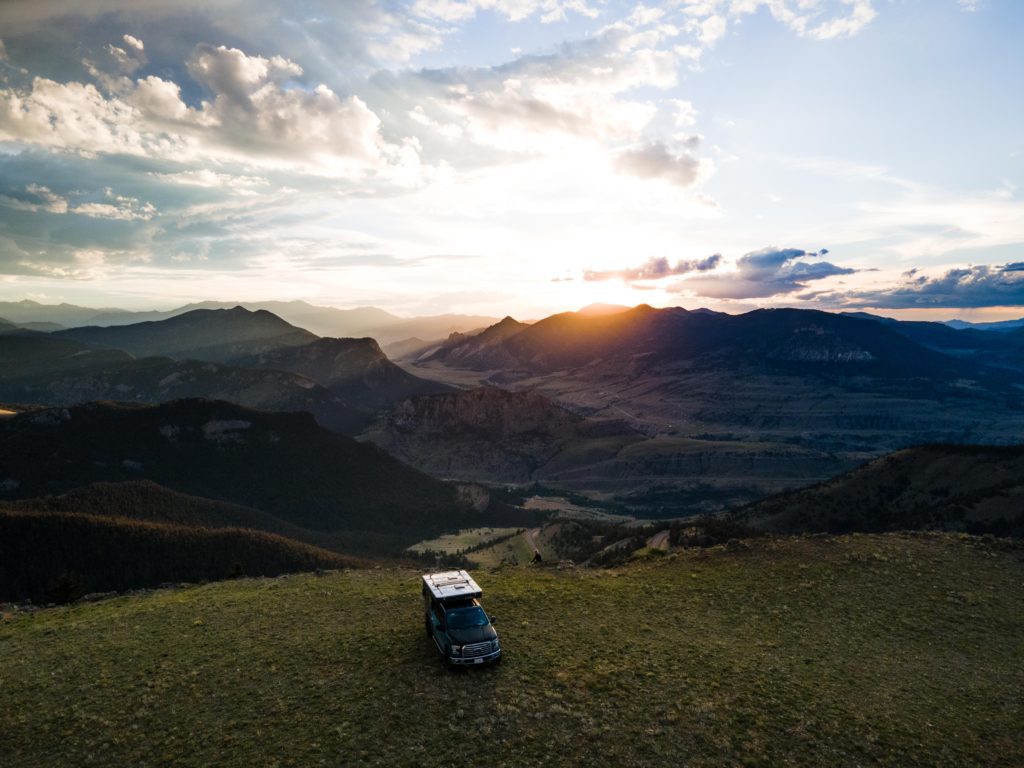
3. Do Time Zone Conversions
I’ve taken 1 am meetings in bamboo huts in the middle of the Indonesian jungle and evening meetings from Mideveil Airbnbs in Estonia. Traveling and working remotely is all about learning to adjust and being OK with working random hours of the day. It does CHANGE how you travel - because traveling and working remotely is not a vacation, and sometimes meetings and work commitments fall at not-so-convenient times. But that’s okay! Because you get to take meetings from bamboo huts, beach shacks, and quaint cafes, how many people get to say that?
It’s also important to note that your email calendar doesn’t automatically adjust time zones. So if you want it to sync up when you travel, double-check that!

The chair I took that 1:00am meeting in
4. Plan/Adjust Meetings Ahead of Time
Whenever I know I will be traveling, I will pre-plan meetings or change the time of set meetings. 99% of the time if I change a meeting to better match my time zone it's met by excitement and questions from other attendees. When I tell you MOST clients are FINE and LOVE that you work from random corners of the world, I mean it! If anything, I think it’s strengthened many of my professional relationships because travel + working shows commitment and drive.
5. Don’t Travel With People Who Took Time Off
Yes, this is a mistake I’ve made more than once, and I will say everyone I have ever traveled with who took time off while I was working has been SO nice and graceful about the situation when I needed to work. The problem here is the pressure YOU will feel on the trip. I always feel SO bad working while traveling when other people take time off to enjoy every moment. Take the time off when you are taking trips that NEED the time off, and save work travel trips for traveling with other remote workers or on your own.

Sunrise before work along Lake Superior
6. Remember You ALSO Deserve Time Off
I will admit I am horrible at this, and it’s something I need to remind myself of often. The ability to work remotely and travel is a blessing, but it is also a curse. When you can work from anywhere, you then work from everywhere.
I rarely take an actual 'vacation', which has really messed with my work/life balance. Don’t forget you earn vacation days and that not every trip has to be a working trip. I am guilty of this, and I don’t want others to make the same mistake. Stop taking random unimportant work calls at 10 pm from Greece! And set that damn OOO!
7. Working Remote While Traveling is NOT a Vacation
There is a certain amount of discipline that is required to work remotely while traveling, and don’t get carried away and let your work fall by the wayside. Remember, when you are working remotely you are also proving to your employer that working remotely can be just as (or more!) productive as working in an office! Being the slacker who “works remotely” AKA never works, will ruin it for future employees. But honest and straight up with yourself, if you can’t do it, don’t do it.
8. Take a Mini Test Trip
It’s really important to learn how you travel + work before jetting off on a 3-month trip across the world. Truth is, some people SUCK at working remotely while traveling, and that’s okay! But it’s best to take a test trip to learn how well you travel. You can do this by taking a trip away to a cabin near where you live or grabbing a flight to a random city in the United States.
But remember - your first trip working remotely won’t be perfect! It’s also the ideal time to learn, work out kinks, and make adjustments for future trips. Do you work better doing your shift all at once? Do you split hours? Do you get distracted? How do you work best in new environments?
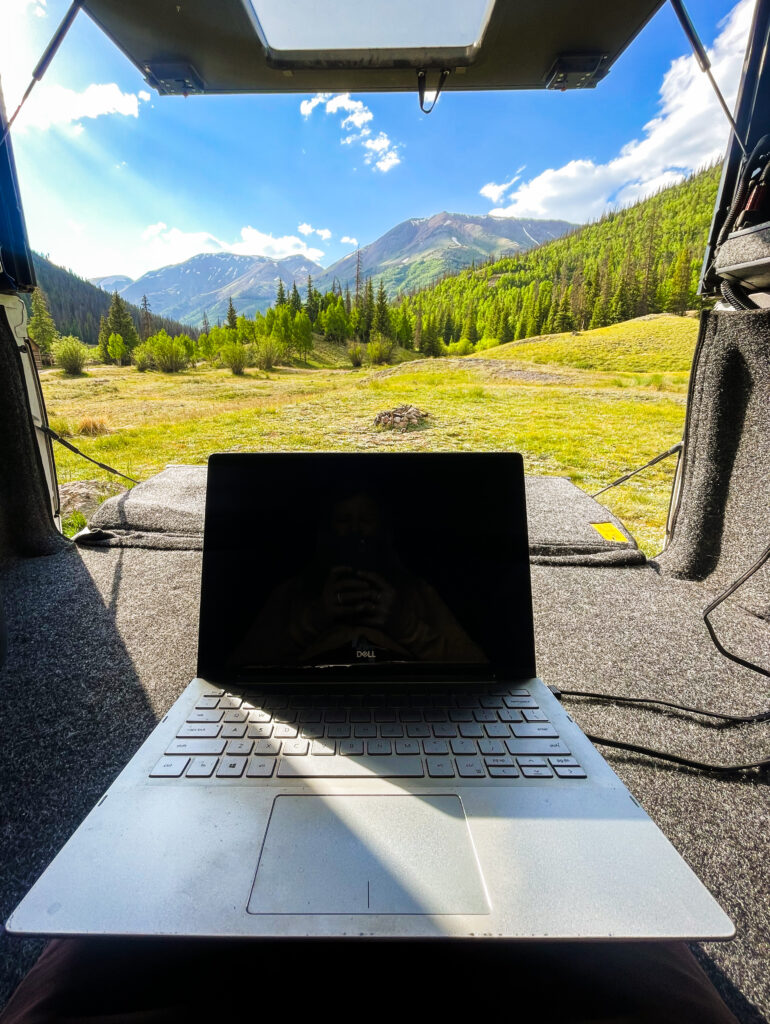
9. Research the Country You Are Traveling To
You have to understand the WiFi situation before traveling to different countries. There are some countries that are PERFECT for digital nomads, while others make it really difficult to get consistent WiFi and work remotely without stress.
Examples of countries that are good for working remotely:
- Italy
- United Kingdom
- Latvia
- Lithuania
- France
- Spain
- Portugal
- Costa Rica
- Guatemala
- Australia
- New Zealand
- Singapore
Countries that are not-so-great for digital nomads:
- Egypt
- Mexico
- Cambodia
- Vietnam
- India
- Kenya
- Venezuela
- Libya
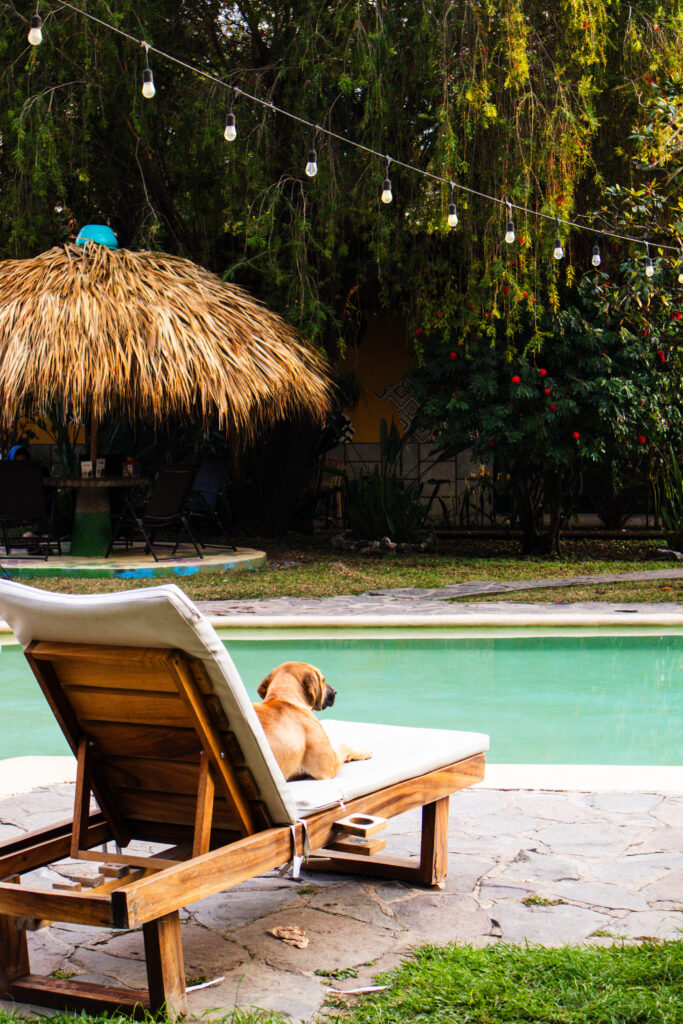
View from working at Selina Atitlan Hostel
10. Work on Long Flights
Almost every overseas flight offers WiFi. It’s sucky WiFi, so don’t expect to Zoom your boss, but it’s WiFI, enough to check your emails and such. And you know what’s really boring? LONG FLIGHTS. I am always incredibly productive on flights because there is literally nothing else to do.
A 16-hour flight? I’ll be working at least 6 and sleeping 5.
10 hours across the Atlantic Ocean? Easy - I’ll be sending emails at 36,000 ft over who-knows-where Greenland.

Tips for Working Remotely While Traveling
Okay, whew! That was a bit long-winded, but I hope it was helpful. Working remotely is one of the best opportunities and if you want my honest opinion, don’t waste it! If your company allows you to travel the world and work, do it! Don’t let the opportunity pass you by. Because one day you’ll be old in rocker and one of your biggest regrets is that you had the perfect opportunity to travel the world, but you didn’t.
Book the flight, explore, work from random corners of the world, make your friends jealous, and romanticize your life. Working remote is a gift - don’t let it go to waste!
At any given moment, Shalee is either lost, hunting for ice cream, or obsessively planning her next adventure.
Born and raised in rural Michigan, she began exploring the shores of Great Lakes as a teen, often sleeping in her car to save money. Eventually, her urge to explore pushed beyond her Midwest borders. Today, Shalee shares her tips and stories to thousands of readers interested in adventure and outdoor tourism. Her pack now includes two spunky hiking cats and her partner, Josh. Learn more about her here.
Join the Adventure






